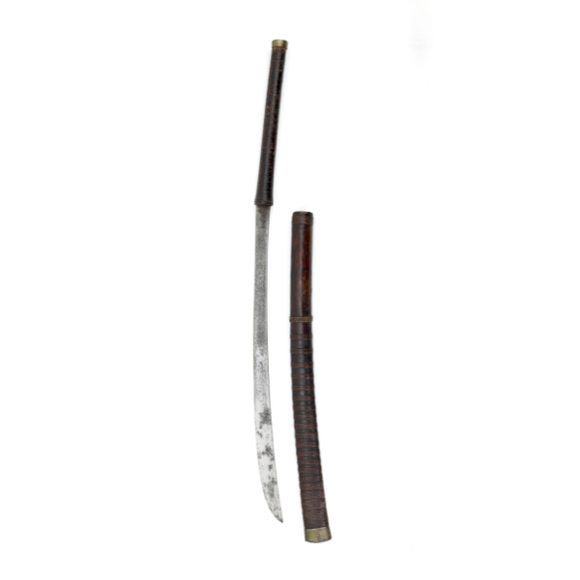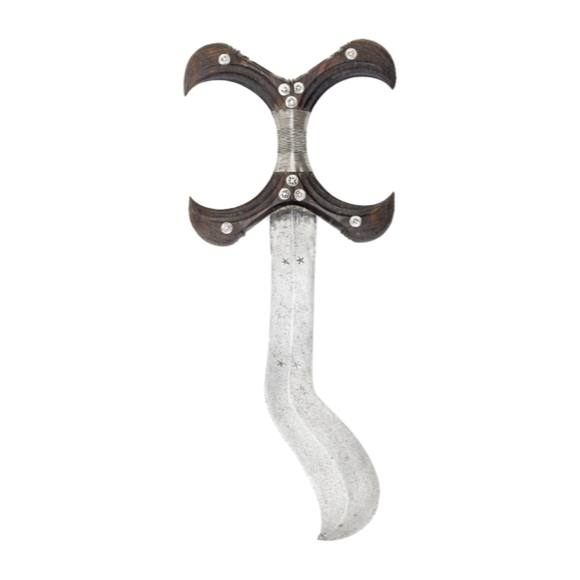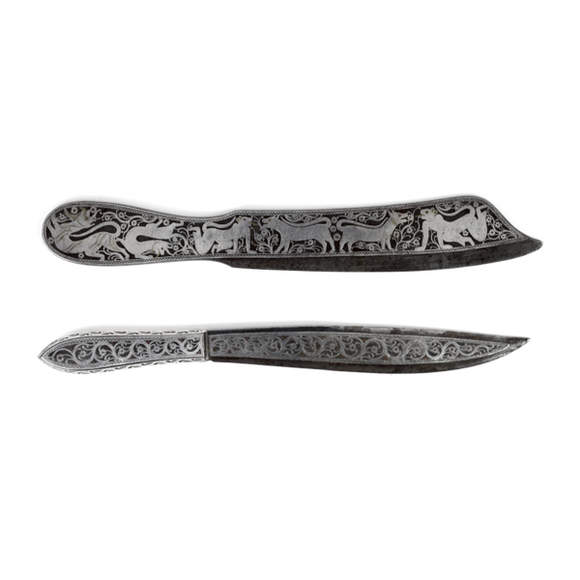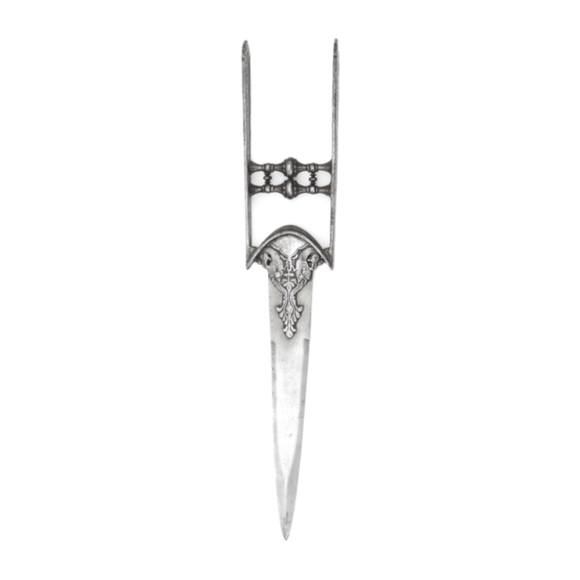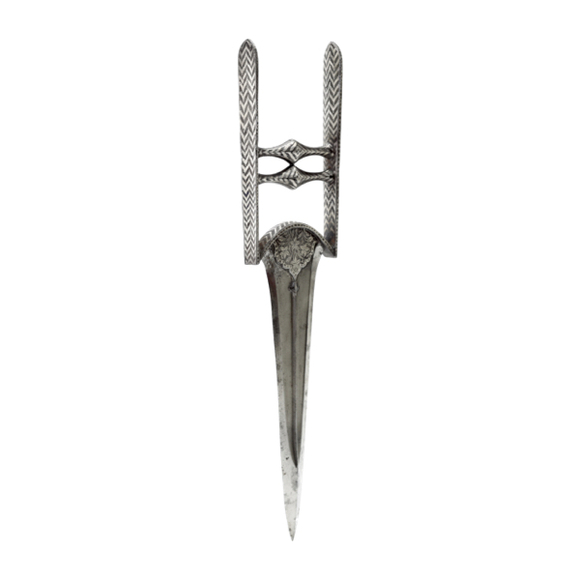Of a type likely produced by the Shan people and traded widely in the region.

Sheathed 38.1 cm
Knife 35.4 cm
21.2 cm
Base 6 mm
Middle 4.5 mm
4 cm from tip 4.5 mm
Base 21 mm
Middle 22 mm
4 cm from tip 21 mm
171 grams
20 mm from hilt
Iron, steel, silver, copper, wood, red lacquer
Yunnan, China
Late 19th to early 20th century
From a UK based dealer
Description
A rare dagger from Yunnan. It has a substantial blade with an elegant clipped tip and red lacquered grooves. Both features remind of earlier Chinese military sabers of the 17th century and may reflect local memory of pro-Ming and Qing military presence in the area in the 17th century.
The hilt is entirely clad in silver, terminating in the typical bulb pommel that is mainly associated with the Dai people of Yunnan. The rest of the hilt is decorated with stylized rolling thunder carvings, resembling the greek key of Europe, and two bands with four cartouches showing different flowers and the accouterments of four of the Eight Immortals of Daoist lore. The guard is a small copper plate.
The scabbard consists of halves of wood, held together by a series of silver bands. Mouthpiece and endpiece are decorated with bands of flowers in repousse, and their inner edges are cut in traditional Chinese cloud head shapes, yúntóu (雲頭) which also can be interpreted as stylized língzhī (灵芝) mushrooms.
At the center is a mount shaped like a double lozenge, fāngshèng (方胜), which is considered a lucky symbol and in some interpretations represents victory.
Condition
In very good condition throughout. No damage, losses or repairs.
Conclusion
An almost perfect example of a very rare type of Yunnanese dagger. The references to earlier Qing swords are an interesting touch. The blade is quite substantial and very well made.








These handsome daggers were worn by the nomadic Hadendoa people, their name has been interpreted as meaning…
Of a style often associated with Tanjore, the seat of the Vijayanagara empire.

